In Dali, the most common element in the whole city is blue and white tie-dye, especially in the ancient town. I guess the people in this city love their tie-dye culture.
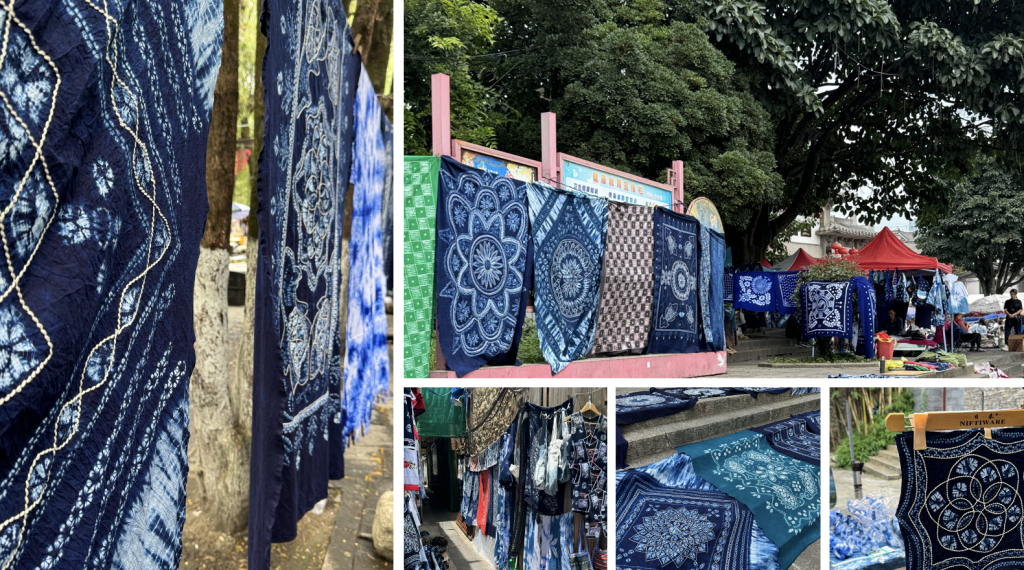
Here I want to say a misunderstanding. In Mandarin, many people pronounce it as Zha Ran, but it should actually be pronounced as Za Ran. The project I am most looking forward to in Dali is to participate in the tie-dye project of intangible cultural heritage. Just like what Hannah said during the interview, when understanding culture, we should not just understand it perfunctorily, but understand the connotation of culture.
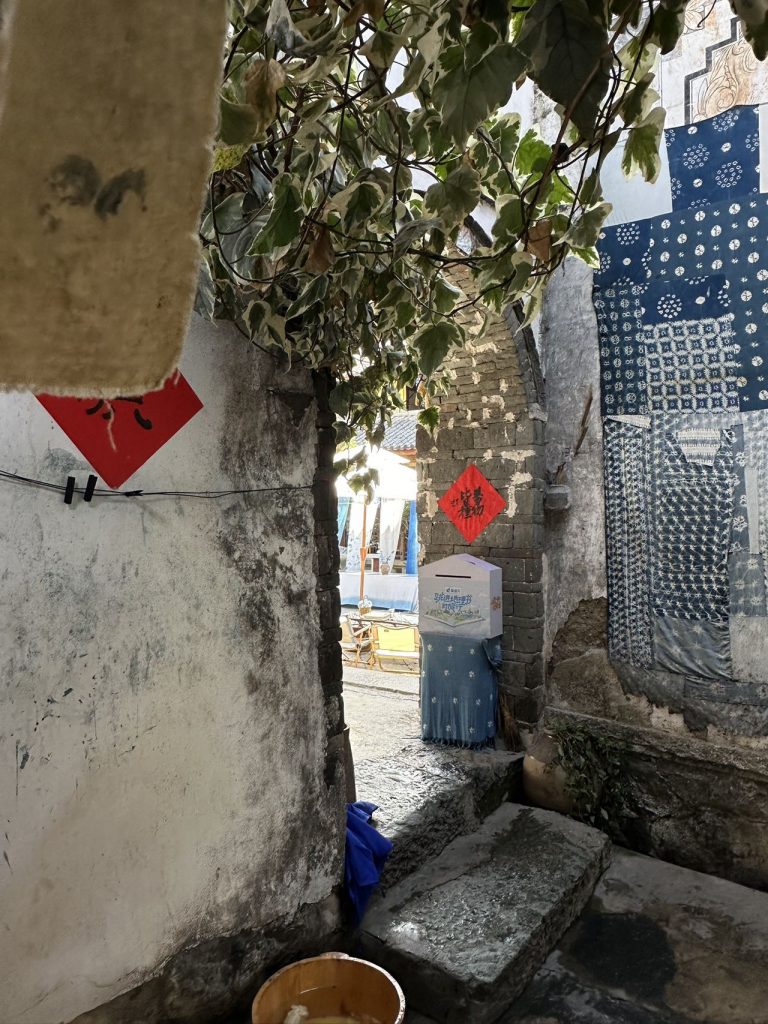
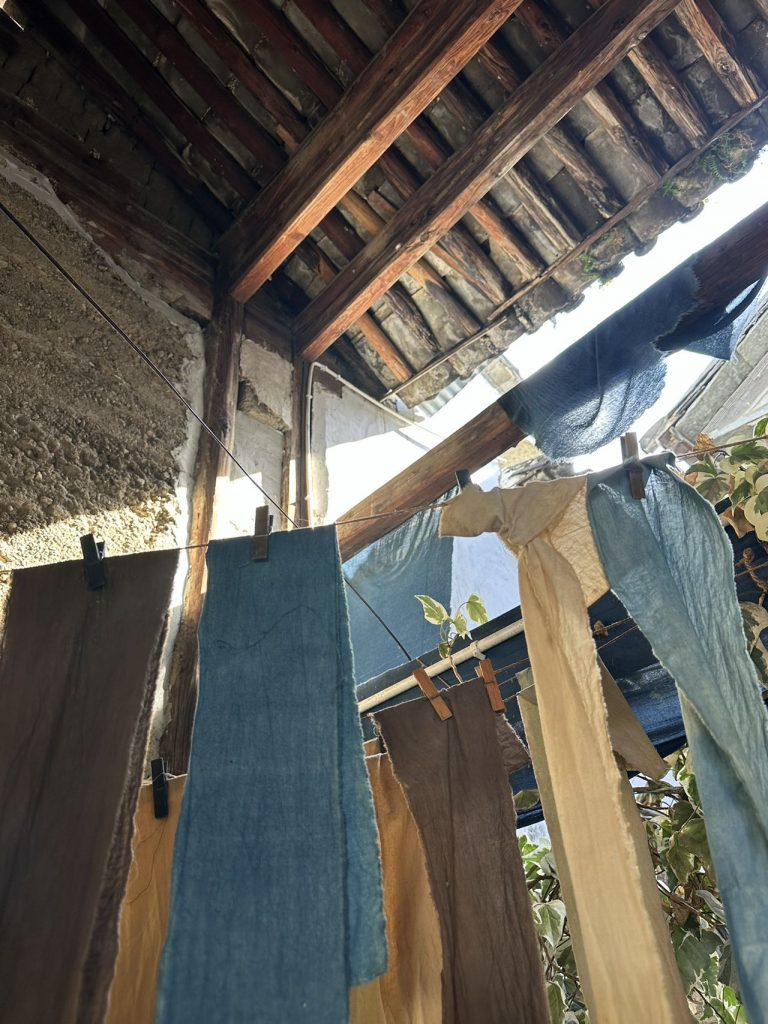
Workshop background:
The workshop I participated in is located in Zhoucheng Village, Xizhou Town, Dali City, 40 minutes away from the center of Dali City. The venue is in a very primitive Bai-style courtyard. According to the staff, this building was built in 1886 and carries the memories of many generations of Bai people. The workshop here uses the most primitive techniques to bring every visitor the most authentic and purest Bai cultural experience.
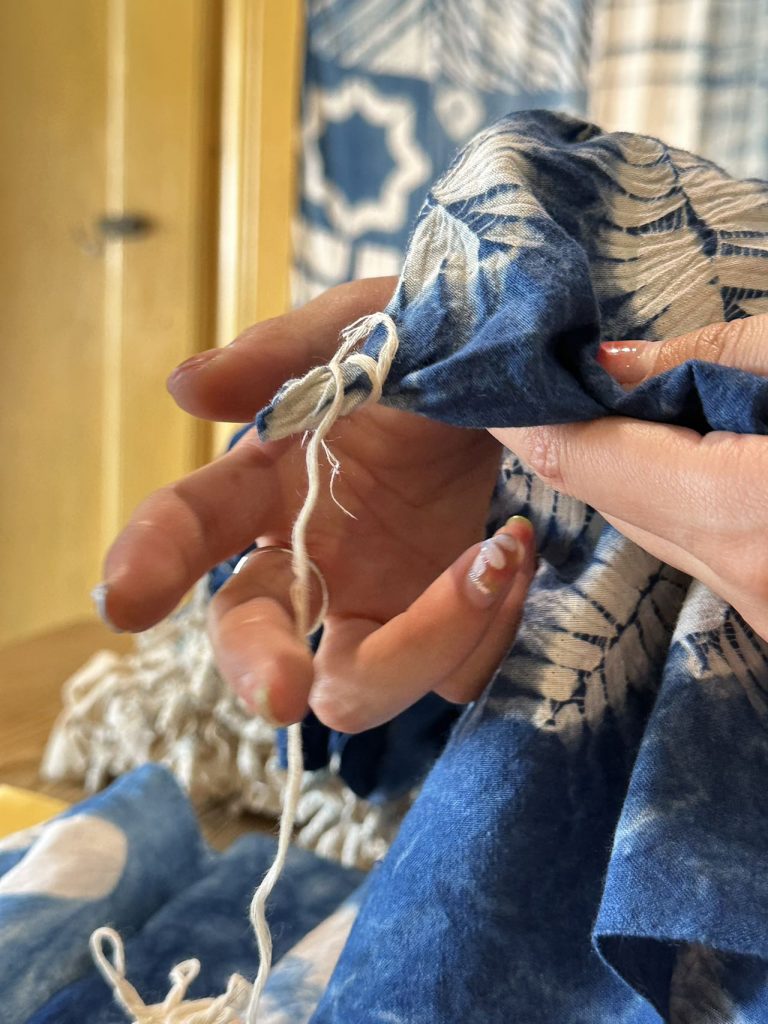
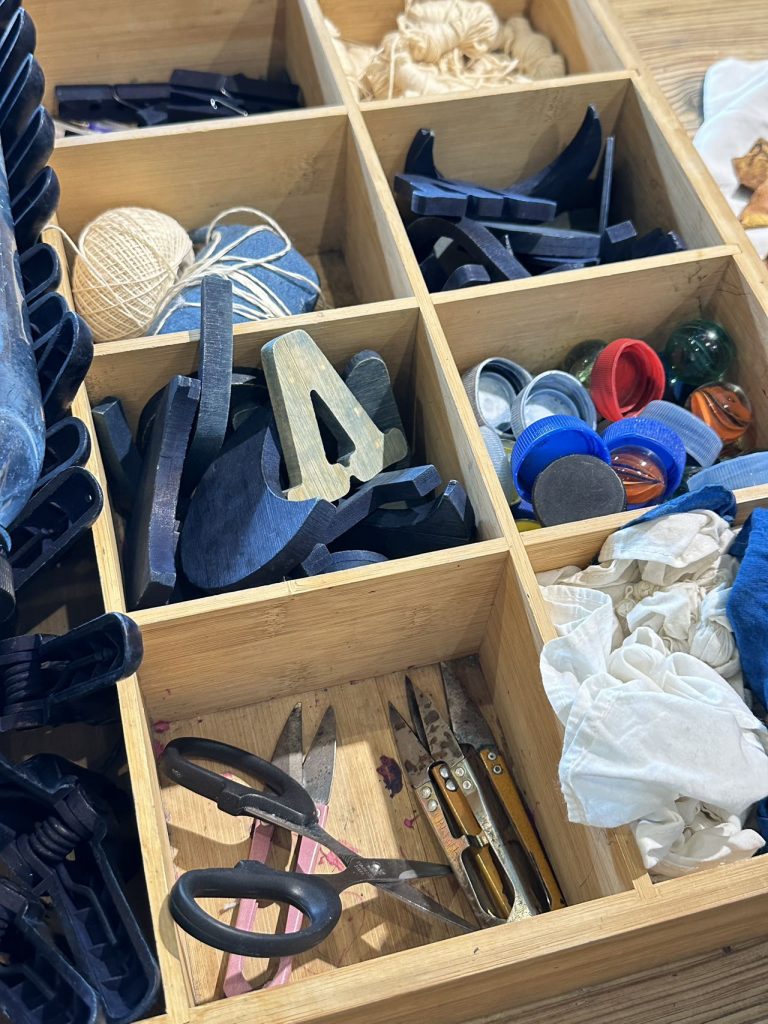
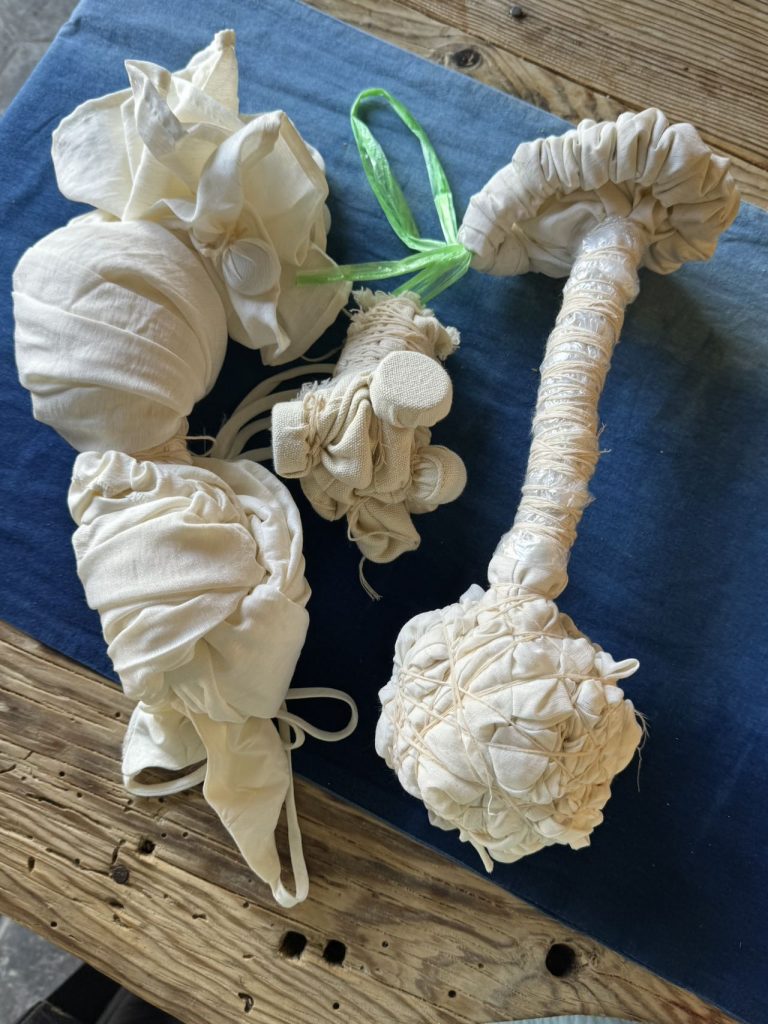
- Tie:
There are several steps that are not open to tourists for production because of the long time (harvest indigo / manually embroider pattern), so we started directly from designing the prints. In fact, designing prints is very simple. We only need to use some simple props – marbles, bottle caps, small cups, pattern molds, etc., but the staff also told us that the most traditional method does not have so many ready-made props to help with production, which is a kind of “upgrade”. Wrapping these props with cotton thread on the items we made completes the “tie” step.
- Dyeing:
The dyeing materials are mainly plants. At the beginning, Dali tie-dyeing only had cyan (blue) and white, but with the needs of people in the later period, it gradually extended to different colors.
The colors formed by each plant:
Indigo – blue
Hematoxylon – pink
Gardenia / Onion skin – yellow
Green layer of walnut – brown
Saffron – red
Pomegranate rind – light green
urmeric – bright yellow
Before dyeing begins, we need to soak the wrapped work in hot water.
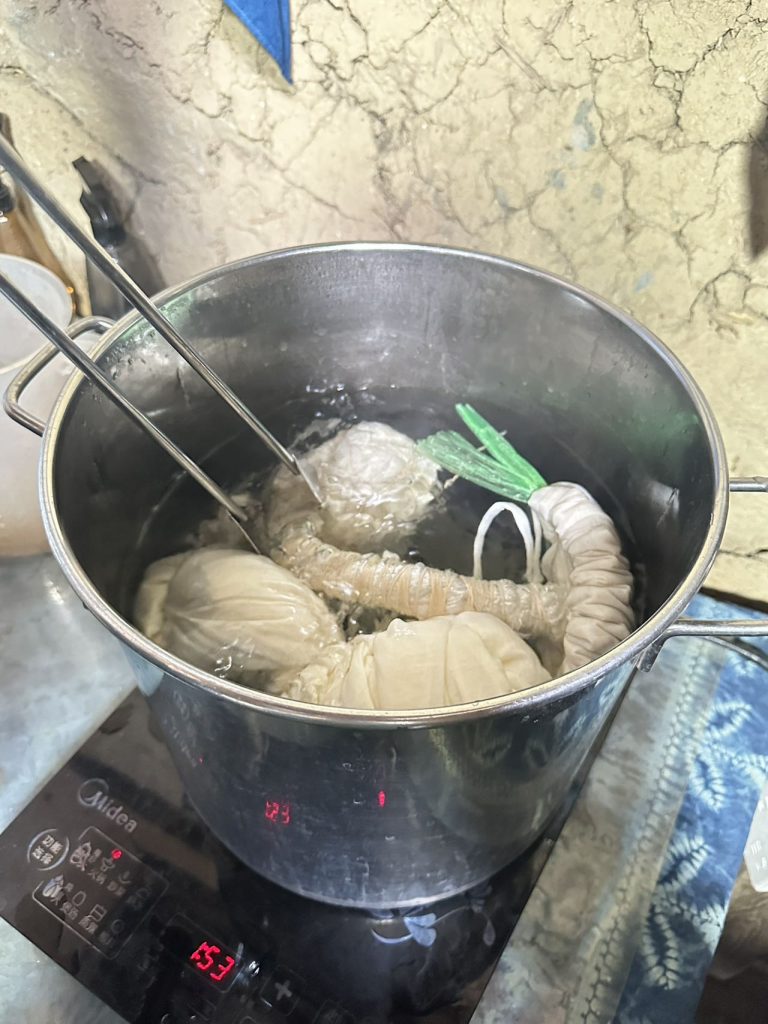
After soaking, we can put the work in a bucket and soak it again with dyeing materials. (you need to hold it in the water).
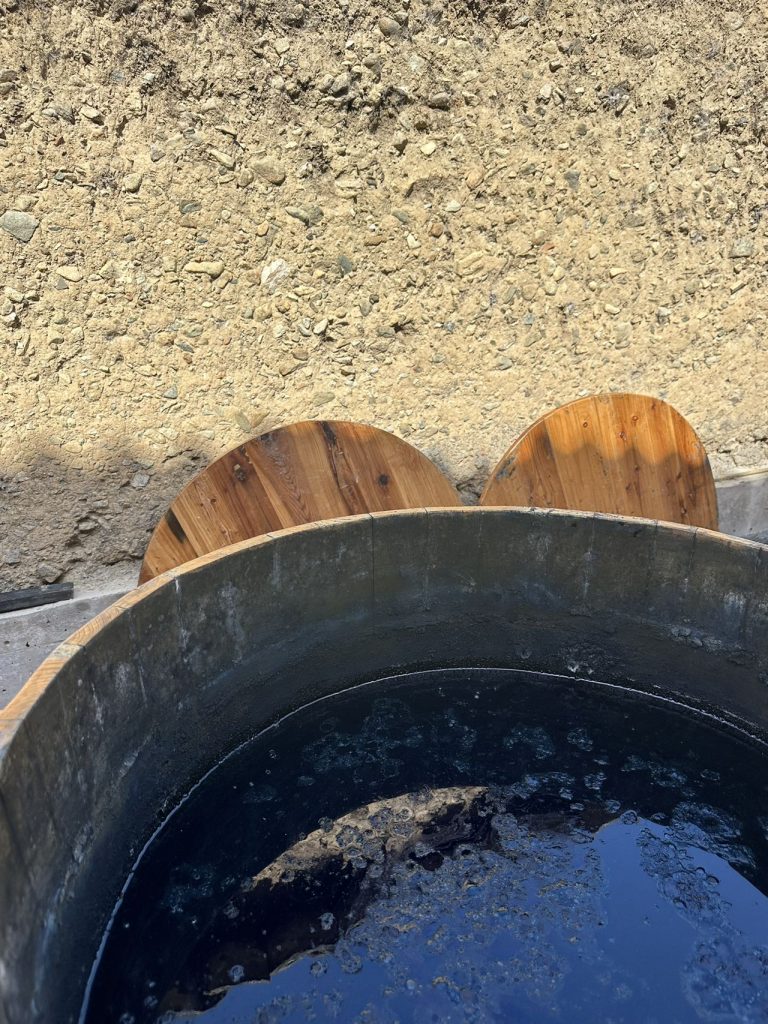
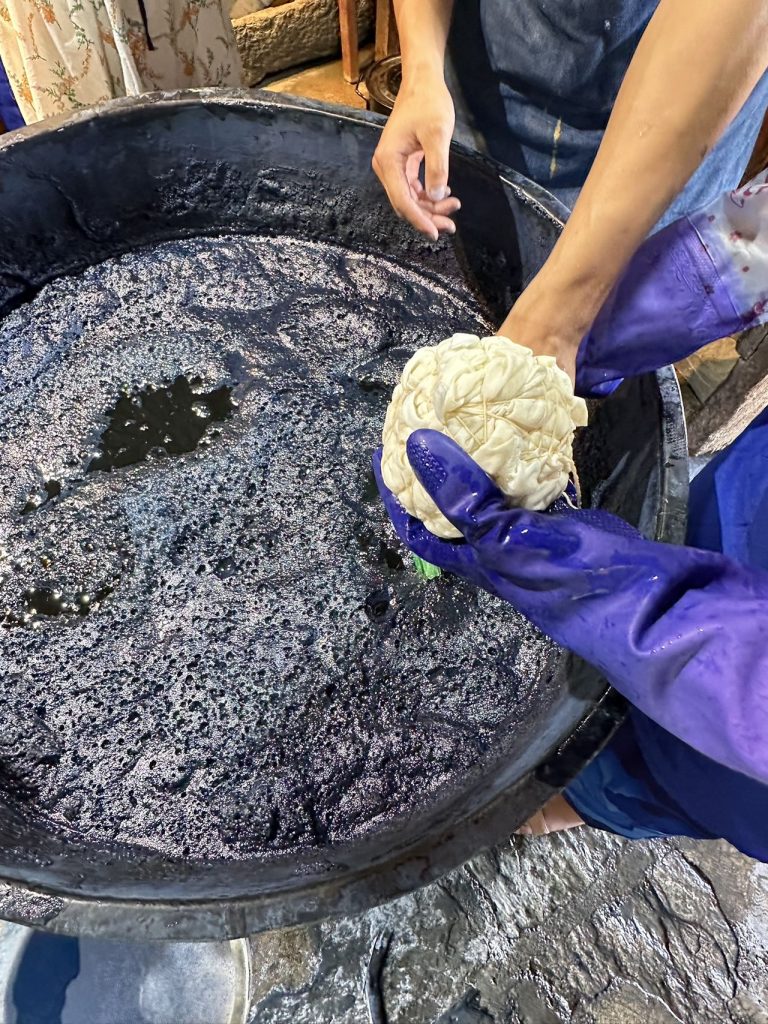
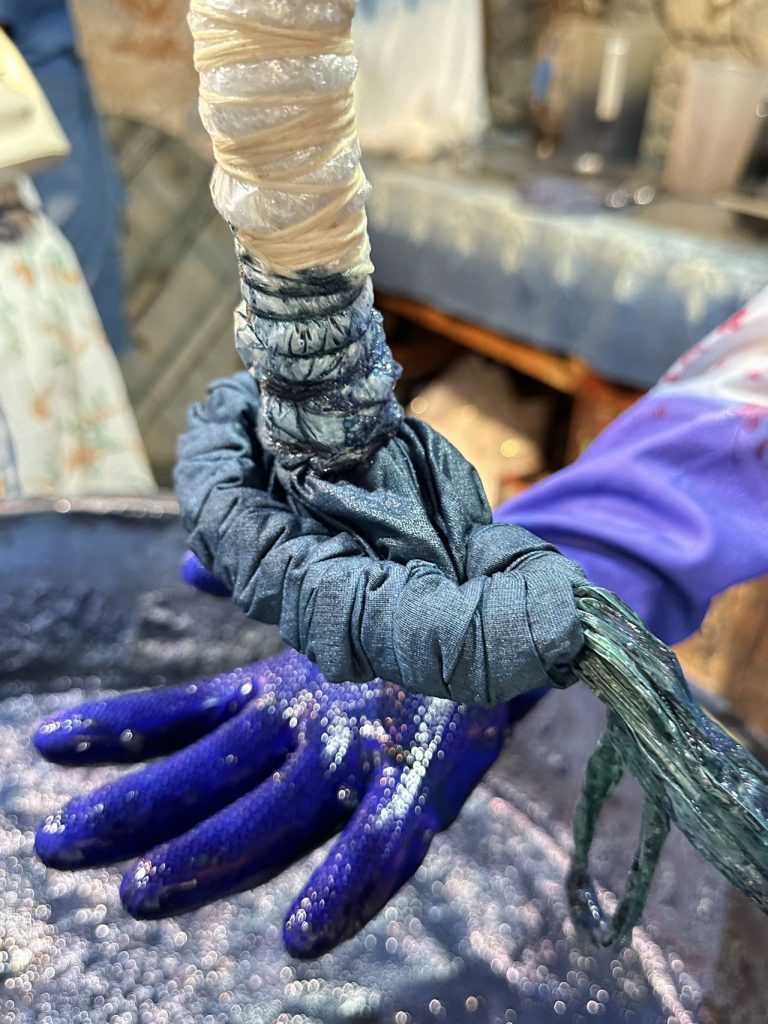
Once the color has soaked into the fabric, you can remove the string and wash it. The amazing thing is that the wrapped part appears white, while the unwrapped part appears the blue color of the dye.
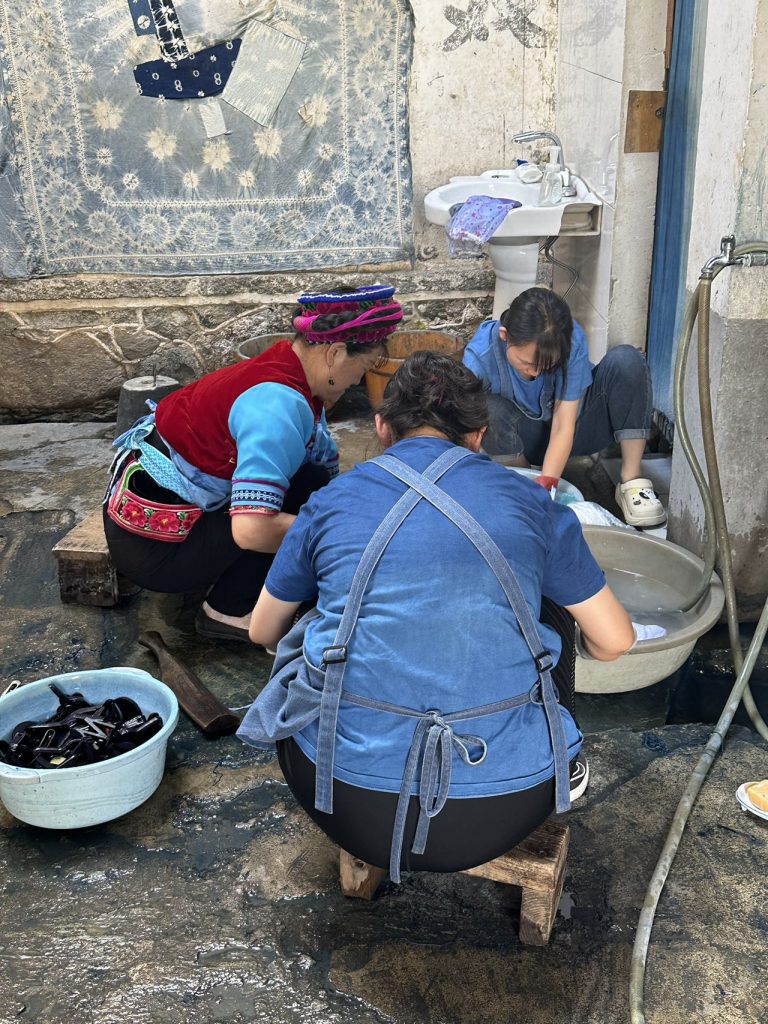
Finally, we can hang the washed clothes to dry, and the finished product is ready.
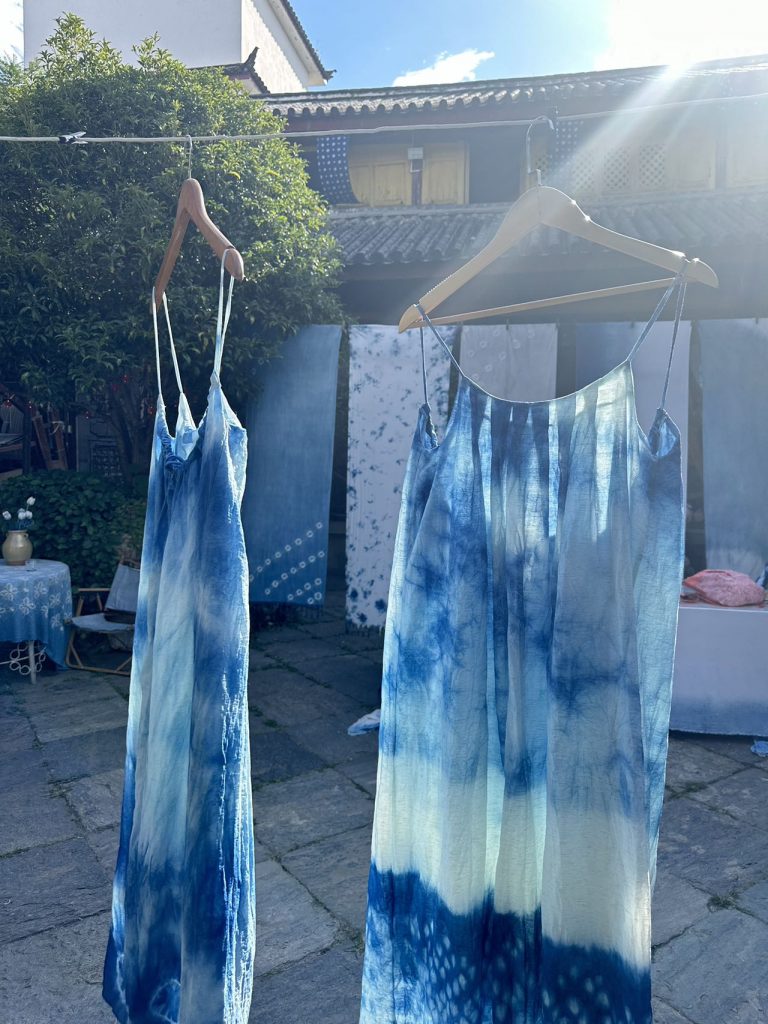
Although this is just a simple version of the tie-dye workshop, I felt the respect and love of the older generation for this culture. Although the fabrics dyed with indigo have a pungent smell, isn’t this pure natural dye a gift from God? When I heard the staff say that most factories have begun to use industrial dyes for “tie-dyeing”, I felt sad. Although culture is progressing, as an intangible cultural heritage, this is the most core and precious part, and it should not be replaced by such cultural misappropriation.